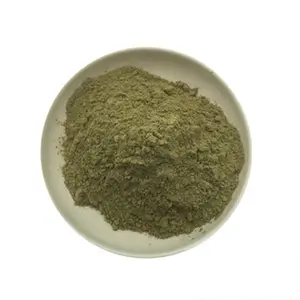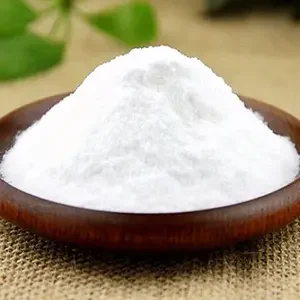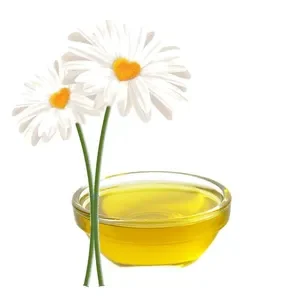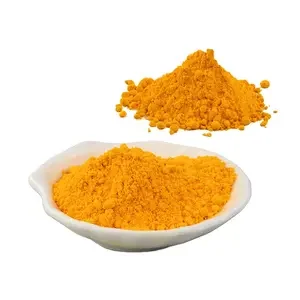Product Name: Beauveria Bassiana
Appearance: Off white powder or light yellow
Specification : 1*10^10 / 2*10^10 CFU/g
Beauveria Bassiana is an entomopathogenic fungus that grows naturally in soil all over the world. Acting as a parasite on various arthropod species, causing white muscardine disease; It widely used as a sprayed biological insecticide to control a great many pests such as bed bugs, locust, thrips, whiteflies, aphids, and different beetles.
Once Beauveria Bassiana infects the locust, the fungus grows fast inside of the locust’s body. Feeding on the nutrients present in the locust’s body and producing toxins continuously.
Beauveria Bassiana is highly useful in controlling insect pests. It is basically a fungus that grows naturally in soils. The spore of this fungus when comes in contact with the cuticle (skin) of the target insect pest they germinate and grow directly through the cuticle to the inner body of the host. The fungus by taking nutrients from the insect proliferates and colonizes the entire insect and thus drains the insect of nutrients and the infected insects eventually die.
Beauveria bassiana is a common soilborne fungus that occurs worldwide. It attacks a wide range of both immature and adult insects. Beauveria produces spores that are resistant to environmental extremes and are the infective stage of the fungal life cycle. The spores (called conidia in this case) infect directly through the outside of the insect’s skin. Under favorable temperature and moisture conditions, a conidium adhering to the host cuticle will germinate. The fungal hypha growing from the spore secretes enzymes which attack and dissolve the cuticle, allowing it to penetrate the skin and grow into the insect body. Once inside the insect it produces a toxin called Beauvericin that weakens the host’s immune system.
After the insect dies, an antibiotic is produced that enables the fungus to outcompete intestinal bacteria. Eventually the entire body cavity is filled with fungal mass. When conditions are favorable the fungus will grow through the softer parts of the insect’s body, producing the characteristic “white bloom” appearance. Relative humidity must be 92% or more for B. bassiana to grow outside the insect. These external hyphae produce conidia that ripen and are released into the environment, completing the cycle.
Features
(1) Wide Spectrum
Beauveria Bassiana can parasitize more than 700 species of insects and mites of 15 orders and 149 families, such as Lepidoptera, Hymenoptera, Homoptera, with wings mesh and Orthoptera, such as adult, corn borer, moth, soybean sorghum budworm, weevil, potato beetle, small tea green leafhoppers, rice shell pest rice planthopper and rice leafhopper,, mole, grubs, wireworm, cutworms, garlic, leek, maggot maggots variety of underground and ground, etc .
(2) Non-Drug Resistance
Beauveria Bassiana is a microbial fungicide, which mainly kills pests through parasitic reproduction. Therefore, it can be used continuously for many years without drug resistance.
(3) Safe To Use
Beauveria Bassiana is a microbial fungus that only acts on host pests. No matter how much concentration used in production, there will be no drug residues.
(4) Low Toxicity And No Pollution
Beauveria Bassiana is a preparation produced by fermentation. It has no chemical components and is a green, safe, and reliable biological pesticide. It has no pollution to the environment and can improve soil conditions.
Product Function
Advantage:
1,Beauveria Bassiana helps to increase productivity by improving the crop health through containing the pests.
2,Beauveria Bassiana is eco-friendly and helps to maintain the ecological balance.
Product Application
Crops:
Cereals, Pulses, Vegetables, Fruit crops, Cole crops, Orchards, fiber crops, cut flowers Ornamentals in greenhouses; nurseries, lawns and landscape.
Target pests:
Caterpillars, Weevils, Leafhoppers, Bugs, Grubs and Leaf-feeding insects.

| We can also provide other plant-based pesticide products | ||
| Product name | CAS | Product name |
| Matrine 1%-98% | 519-02-8 | Bacillus subtilis |
| Rotenone 5% 40% | 83-79-4 | Bacillus licheniformis |
| Toosendanin 1% 2% | 58812-37-6 | Bacillus amyloliquefaciens |
| Stemonine 1% | Bacillus polymyxa | |
| Sanguinarine 2% 40% | 2447-54-3 | Bacillus megaterium |
| Osthole 10% 98% | 484-12-8 | Bacillus Laterosporus |
| Veratrine 1% | 8051-02-3 | Trichoderma harzianum |
| pyrethrin 25% 50% 70% | 8003-34-7 | Trichoderma viride |
| berberine hydrochloride 97% | 633-65-8 | Bacillus pumilus |
| Oxymatrine 98% | 16837-52-8 | Paecilomyces lilacinus |
| Total Matrines 70% | Bacillus mucilaginosus | |
| Emodin 98% | 518-82-1 | Beauveria bassiana |
| Physcion 10% | 521-61-9 | Metarhizium anisopliae |
| Tea Saponin 85% | Bacillus thuringiensis | |
| Celastrus angulatus 6% | Organic fertilizer starter | |
| Azadirachtin 38%-41% | 11141-17-6 | |
| Limonin | 1180-71-8 | |
| Dried pyrethrum flower | ||
| Brassinolide | 72962-43-7 | |





Reviews
There are no reviews yet.